The loss of SHMT2 mediates 5-fluorouracil chemoresistance in colorectal cancer by upregulating autophagy
- PMID: 33990700
- PMCID: PMC8195740
- DOI: 10.1038/s41388-021-01815-4
The loss of SHMT2 mediates 5-fluorouracil chemoresistance in colorectal cancer by upregulating autophagy
Abstract
5-Fluorouracil (5-FU)-based chemotherapy is the first-line treatment for colorectal cancer (CRC) but is hampered by chemoresistance. Despite its impact on patient survival, the mechanism underlying chemoresistance against 5-FU remains poorly understood. Here, we identified serine hydroxymethyltransferase-2 (SHMT2) as a critical regulator of 5-FU chemoresistance in CRC. SHMT2 inhibits autophagy by binding cytosolic p53 instead of metabolism. SHMT2 prevents cytosolic p53 degradation by inhibiting the binding of p53 and HDM2. Under 5-FU treatment, SHMT2 depletion promotes autophagy and inhibits apoptosis. Autophagy inhibitors decrease low SHMT2-induced 5-FU resistance in vitro and in vivo. Finally, the lethality of 5-FU treatment to CRC cells was enhanced by treatment with the autophagy inhibitor chloroquine in patient-derived and CRC cell xenograft models. Taken together, our findings indicate that autophagy induced by low SHMT2 levels mediates 5-FU resistance in CRC. These results reveal the SHMT2-p53 interaction as a novel therapeutic target and provide a potential opportunity to reduce chemoresistance.
Conflict of interest statement
The authors declare no competing interests.
Figures
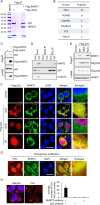
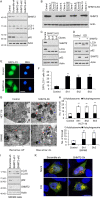

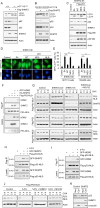
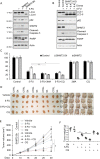
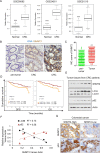
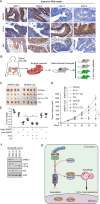
Similar articles
-
Pseudolaric acid B induces mitotic arrest and apoptosis in both 5-fluorouracil-sensitive and -resistant colorectal cancer cells.Cancer Lett. 2016 Dec 28;383(2):295-308. doi: 10.1016/j.canlet.2016.09.007. Epub 2016 Oct 3. Cancer Lett. 2016. PMID: 27713084
-
FOXM1 evokes 5-fluorouracil resistance in colorectal cancer depending on ABCC10.Oncotarget. 2017 Jan 31;8(5):8574-8589. doi: 10.18632/oncotarget.14351. Oncotarget. 2017. PMID: 28051999 Free PMC article.
-
Morin inhibits the progression of 5-fluorouracil-resistant colorectal cancer by suppressing autophagy.Int J Biochem Cell Biol. 2025 Aug;185:106783. doi: 10.1016/j.biocel.2025.106783. Epub 2025 Apr 24. Int J Biochem Cell Biol. 2025. PMID: 40287051
-
Natural Alternatives in the Treatment of Colorectal Cancer: A Mechanisms Perspective.Biomolecules. 2025 Feb 24;15(3):326. doi: 10.3390/biom15030326. Biomolecules. 2025. PMID: 40149862 Free PMC article. Review.
-
Lysosomes and LAMPs as Autophagy Drivers of Drug Resistance in Colorectal Cancer.Cells. 2025 Apr 11;14(8):574. doi: 10.3390/cells14080574. Cells. 2025. PMID: 40277899 Free PMC article. Review.
Cited by
-
SHMT2 regulates esophageal cancer cell progression and immune Escape by mediating m6A modification of c-myc.Cell Biosci. 2023 Nov 6;13(1):203. doi: 10.1186/s13578-023-01148-7. Cell Biosci. 2023. PMID: 37932821 Free PMC article.
-
SHMT2 promotes papillary thyroid cancer metastasis through epigenetic activation of AKT signaling.Cell Death Dis. 2024 Jan 25;15(1):87. doi: 10.1038/s41419-024-06476-1. Cell Death Dis. 2024. PMID: 38272883 Free PMC article.
-
Thymoquinone: A Promising Therapeutic Agent for the Treatment of Colorectal Cancer.Curr Issues Mol Biol. 2023 Dec 23;46(1):121-139. doi: 10.3390/cimb46010010. Curr Issues Mol Biol. 2023. PMID: 38248312 Free PMC article. Review.
-
PTRF/Cavin-1 enhances chemo-resistance and promotes temozolomide efflux through extracellular vesicles in glioblastoma.Theranostics. 2022 May 16;12(9):4330-4347. doi: 10.7150/thno.71763. eCollection 2022. Theranostics. 2022. PMID: 35673568 Free PMC article.
-
Serine hydroxymethyltransferase 2: a novel target for human cancer therapy.Invest New Drugs. 2021 Dec;39(6):1671-1681. doi: 10.1007/s10637-021-01144-z. Epub 2021 Jul 3. Invest New Drugs. 2021. PMID: 34215932 Review.
References
-
- Siegel RL, Miller KD, Goding Sauer A, Fedewa SA, Butterly LF, Anderson JC, et al. Colorectal cancer statistics, 2020. CA Cancer J Clin. 2020;70:145–64. - PubMed
-
- Gustavsson B, Carlsson G, Machover D, Petrelli N, Roth A, Schmoll HJ, et al. A review of the evolution of systemic chemotherapy in the management of colorectal cancer. Clin Colorectal Cancer. 2015;14:1–10. - PubMed
-
- Saha S, Panigrahi DP, Patil S, Bhutia SK. Autophagy in health and disease: a comprehensive review. Biomed Pharmacother. 2018;104:485–95. - PubMed
Publication types
MeSH terms
Substances
LinkOut - more resources
Full Text Sources
Other Literature Sources
Medical
Research Materials
Miscellaneous

